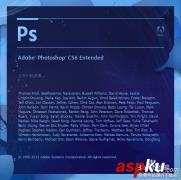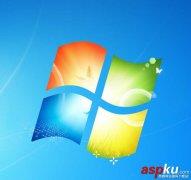通过第一部分我们已经实现了CentOS7.x的模版制作,并且您可以根据不同的Linux发行版本的ks.cfg文件对其他系统(Ubuntu、CentOS8、RHEL)进行模版封装。
现在我们开始针对Windows操作系统模版进行构建,Windows和Linux使用的无人值守配置文件不同,我将通过示例帮助大家实现Windows的定制化。
同时需要注意一点,Windows操作系统镜像尽量选择包含最新补丁的版本,或自己部署本地的WSUS服务器,这样可以提高模版生成的速度。
本示例对Windows模版进行了如下的特性定制:
1. 使用VMware准虚拟SCSI控制器(SCSI);2. 禁用Windows网络发现功能;3. 启动WinRM(Windows远程管理);4. 安装VMware Tools;5. 打开远程桌面(RDP);6. 配置中国标准时间(+08:00)和语言相关;
相关工具:Packer是一个开源的自动化虚拟机模版构建工具,支持私有云和公有云,几乎涵盖所有的环境。提示,由于Packer示例中,模版名是以日期作为后缀的,所以每天只会产生一个模版,同时如果做计划任务,每天都会有一个模版,要注意清理,避免过度占用磁盘空间。
http://www.packer.io/
Packer Windows Update插件是简化Windows Update的扩展插件,用于模版的Windows补丁更新。https://github.com/rgl/packer-provisioner-windows-update
vSphere是VMware企业级虚拟化软件,被企业客户广泛使用,具备稳定性高、性能好、安全性高和易使用的特点。https://www.vmware.com/cn/products/vsphere.html
https://github.com/6547709/packer-vsphere/tree/master/Windows2016
Windows无人参与安装中详细说明了unattend的语法https://docs.microsoft.com/zh-cn/windows-hardware/customize/desktop/unattend/index
VMware虚拟机硬件版本中详细列出了vSphere对虚拟机硬件版本的支持https://kb.vmware.com/s/article/2007240
环境需求:一台Windows/Linux电脑,能够连接vCenter Server;Packer程序:https://packer.io/downloads.htmlPacker-Windows-Update插件:https://github.com/rgl/packer-provisioner-windows-updateWindows Server 2016 ISO: 根据企业已购买产品情况进行下载VMware Tools:https://my.vmware.com/group/vmware/details?downloadGroup=VMTOOLS10310&productId=742使用时请根据实际环境进行修改
获得Windows2016安装镜像的操作系统版本选择Index和安装key提示:请根据vSphere版本选择VMware Tools版本,本环境使用vSphere6.7U3,对应VMware Tools版本是10.3.10
由于我们下载的操作系统安装镜像版本各不相同,导致在进行无人值守安装时,应答配置文件选择系统不正确,无法自动安装,下面我会教大家如何正确获取您安装光盘中的系统索引。
在Windows中加载Windows Server 2016安装光盘;运行dism /Get-imageinfo命令获取索引信息;本示例中,Windows Server 2016安装光盘加载到驱动器“F”,命令如下:
dism /get-imageinfo /imagefile:F:\sources\install.wim
本示例选择安装Windows Server 2016 Datacenter (桌面体验),如下图所示Index为4,后续步骤需要修改Autounattend.xml文件中的value为4;
Windows产品安装的Key要和版本对应,请登录微软官方网站查询产品安装key,并在稍后的应答文件中修改。
https://docs.microsoft.com/zh-cn/windows-server/get-started/kmsclientkeysPacker和Windows Update插件安装
Packer采用GO语言编写,安装非常简单,只需要将解压后的packer文件拷贝到系统bin目录下即可,下面是在Linux下的安装方式:
wget https://releases.hashicorp.com/packer/1.5.4/packer_1.5.4_linux_amd64.zipwget https://github.com/rgl/packer-provisioner-windows-update/releases/download/v0.9.0/packer-provisioner-windows-update-linux.tgzunzip packer_1.5.4_linux_amd64.ziptar zxvf packer-provisioner-windows-update-linux.tgzcp packer /usr/loca/bincp packer-provisioner-windows-update /usr/loca/binchmod +x /usr/local/bin/packerchmod +x /usr/local/bin/packer-provisioner-windows-updateexport PATH=/usr/local/bin:$PATHpacker versionVMware Tools和pvscsi驱动准备
解压缩已下载的VMware-Tools-core-10.3.10-12406962.zip;
上传\VMware-Tools-core-10.3.10-12406962\vmtools\windows.iso到存储中,并记录位置,后续步骤需要调用;上传\VMware-Tools-core-10.3.10-12406962\floppies\pvscsi-Windows8.flp到存储中,并记录位置,后续步骤调用;Windows Server 2016的Packer模版pvscsi驱动仅在使用了VMware准虚拟的SCSI控制器时候使用。
我们需要两个基础文件和一个脚本目录,用于使用Packer在vSphere环境中构建Windows模版:
windows2016-vsphere.json文件(Packer模版);Autounattend.xml文件(Windows无人值守安装文件);scripts目录(包含置备需要的脚本);windows2016-vsphere.json文件说明推荐下载仓库的文件,避免拷贝粘贴可能造成的字符问题;
variables段落,用于定义vCenter的相关信息和虚拟机配置,其会在Builders段落引用,注意虚拟机文件夹需要预先创建好。
vm-name:定义虚拟机模版基础名称,在build阶段会自己增加日期后缀,以方便却别版本;vm-version:定义虚拟机使用什么硬件版本,当前vSphere6.7U3使用15,其他版本请查询相关工具中心的VMware虚拟机硬件版本;vm-folder:定义虚拟机模版保存在哪个文件夹中;vm-cpu-num:定义虚拟机模版配置的CPU数量,通过模版再进行部署时可以修改;vm-mem-size:定义虚拟机模版配置的内存容量(MB单位),通过模版再进行部署时可以修改;vm-disk-size:定义虚拟机磁盘容量(MB单位),默认创建1个boot分区和一个系统分区,boot分区350MB,系统分区(C盘)使用剩余空间;winadmin-password:定义WinRM远程登录时的口令;iso_url:定义系统安装光盘位置,本示例使用vSphere环境构建,所以指定共享存储的路径;iso_vm_tools_url:定义windows.iso光盘位置,本示例使用vSphere环境构建,所以指定共享存储的路径;提示1:为保证ISO文件有效,可以通过参数(iso_checksum、iso_checksum_type和iso_checksum_url)验证ISO是否完成;
提示2:变量部分可以独立为var.json文件,在build时单独指定;
"variables": { "vsphere-server": "vcenter.corp.local", "vsphere-user": "administrator@vsphere.local", "vsphere-password": "VMware1!", "vsphere-datacenter": "Labs-DC02", "vsphere-cluster": "DC02-Cluster", "vsphere-network": "vlan100", "vsphere-datastore": "SSD_DATASTORE, "vm-name": "WIN2016-T", "vm-version": "15", "vm-folder": "Templates", "vm-cpu-num": "2", "vm-mem-size": "4096", "vm-disk-size": "81920", "winadmin-password": "VMware1!", "iso_url": "[SSD_DATASTORE] 0-ISO/cn_windows_server_2016_vl_x64_dvd.iso", "iso_vm_tools_url":"[SSD_DATASTORE] 0-ISO/windows.iso", "magic_reference_date": "2006-01-02 15-04-05+0800" },
builders段落,用于真正的构建配置,本示例中将经常需要改变的部分通过variables定义,并在此阶段引用。
vm_name:我们采用variables中的名字和日期进行组合,isotime会获取当前日期;notes:显示在虚拟机的备注属性中,用于查看模版具体的构建时间;guest_os_type:定义虚拟机客户机操作系统,可以通VMware官方文档或者创建虚拟机后查询.vmx文件获得正确的客户机操作系统代码;communicator:定义远程连接虚拟机的方式,本示例使用WinRM;winrm_username:定义远程连接用户名;winrm_password:定义远程连接密码;此密码在Autounattend.xml中配置;ssh_username:定义provisioners阶段连接模版虚拟机的口令,此口令来自ks.cfg中的配置;disk_controller_type:定义虚拟机的SCSI控制器类型,这里采用更高性能的VMware准虚拟;disk_thin_provisioned:定义虚拟机是否使用精简磁盘;network_card:网卡类型,这里选择了性能最好的vmxnet3;convert_to_template:定义是否自动转换成模版,请根据需要选择,如果虚拟机部署编排工具不支持从模版克隆,就需要配置为false;iso_paths:定义加载光驱,由于Windows需要安装VMware Tools,所有挂载两个光驱,默认盘符为D和E;floppy_files:定义Windows无人值守安装的Autounattend.xml文件和相关脚本文件,脚本文件会在Autounattend.xml中调用,此驱动器盘符为A;floppy_img_path:定义pvscsi驱动文件路径,用于驱动pvscsi控制器,驱动会在Autounattend.xml中调用,此驱动器路径为B; "builders": [ { "type": "vsphere-iso", "vcenter_server": "{{user `vsphere-server`}}", "username": "{{user `vsphere-user`}}", "password": "{{user `vsphere-password`}}", "insecure_connection": "true", "datacenter": "{{user `vsphere-datacenter`}}", "cluster": "{{user `vsphere-cluster`}}", "network": "{{user `vsphere-network`}}", "datastore": "{{user `vsphere-datastore`}}", "vm_name": "{{user `vm-name`}}-{{isotime \"2006-01-02\"}}", "vm_version": "{{user `vm-version`}}", "folder": "{{user `vm-folder`}}", "notes": "Build via Packer in {{ (isotime | (user `magic_reference_date`)) }}", "boot_wait": "10s", "boot_order": "disk,cdrom,floppy", "guest_os_type": "windows9Server64Guest", "communicator": "winrm", "winrm_username": "Administrator", "winrm_password": "{{user `winadmin-password`}}", "CPUs": "{{user `vm-cpu-num`}}", "RAM": "{{user `vm-mem-size`}}", "RAM_reserve_all": false, "firmware": "bios", "disk_controller_type": "pvscsi", "disk_size": "{{user `vm-disk-size`}}", "disk_thin_provisioned": true, "network_card": "vmxnet3", "convert_to_template": true, "iso_paths": [ "{{user `iso_url`}}", "{{user `iso_vm_tools_url`}}" ], "floppy_files": [ "./autounattend.xml", "./scripts/disable-network-discovery.cmd", "./scripts/disable-winrm.ps1", "./scripts/enable-rdp.cmd", "./scripts/enable-winrm.ps1", "./scripts/install-vm-tools.cmd", "./scripts/set-temp.ps1" ], "floppy_img_path": "[SSD_DATASTORE] 0-ISO/VMwareTools/pvscsi-Windows8.flp" } ],
provissioners段落,用于系统自动化安全完成后的自定义操作,例如:更新系统补丁,清理模版等,本示例中包含ipconfig和系统更新两部分。
"provisioners": [ { "type": "windows-shell", "inline": [ "ipconfig" ] }, { "type": "windows-update", "search_criteria": "IsInstalled=0", "filters": [ "exclude:$_.Title -like '*Preview*'", "include:$true" ], "update_limit": 25 } ]Autounattend.xml文件说明
Autounattend.xml文件的介绍很多,这里不进行详细介绍,可以参考官方文档说明,下面仅针对我定制化的内容进行说明;
第6-12行,定义系统语言相关配置,这里配置的中文,如果是英文请使用en-US;第14-21行,定义pvscsi驱动路径,前面我们在windows2016-vsphere.json中配置的驱动器是B;第23-56行,定义磁盘分区;第62行,定义光盘中所选系统的Index(前面步骤已获取);第76行,定义产品安装Key(前面步骤已获取);第88行,定义时区为CST;第131-139行,定义Windows自动登录,只登录一次,用于后续的脚本执行;第205行,调用脚本安装VMware Tools;第210行,调用脚本打开RDP连接;第231行,定义网络位置;第232行,定义UAAC;第236行,定义Administrator密码;第239-250行,创建ops账户用于应用人员使用;本示例中的密码均为VMware1!,请注意自行修改。
<?xml version="1.0" encoding="utf-8"?><unattend xmlns="urn:schemas-microsoft-com:unattend"> <settings pass="windowsPE"> <component name="Microsoft-Windows-International-Core-WinPE" processorArchitecture="amd64" publicKeyToken="31bf3856ad364e35" language="neutral" versionScope="nonSxS" xmlns:wcm="http://schemas.microsoft.com/WMIConfig/2002/State" xmlns:xsi="http://www.w3.org/2001/XMLSchema-instance"> <SetupUILanguage> <UILanguage>zh-CN</UILanguage> </SetupUILanguage> <InputLocale>0804:00000804</InputLocale> <SystemLocale>zh-CN</SystemLocale> <UILanguage>zh-CN</UILanguage> <UILanguageFallback>en-US</UILanguageFallback> <UserLocale>zh-CN</UserLocale> </component> <component name="Microsoft-Windows-PnpCustomizationsWinPE" processorArchitecture="amd64" publicKeyToken="31bf3856ad364e35" language="neutral" versionScope="nonSxS" xmlns:wcm="http://schemas.microsoft.com/WMIConfig/2002/State" xmlns:xsi="http://www.w3.org/2001/XMLSchema-instance"> <DriverPaths> <PathAndCredentials wcm:action="add" wcm:keyValue="A"> <!-- pvscsi-Windows8.flp --> <Path>B:\</Path> </PathAndCredentials> </DriverPaths> </component> <component name="Microsoft-Windows-Setup" processorArchitecture="amd64" publicKeyToken="31bf3856ad364e35" language="neutral" versionScope="nonSxS" xmlns:wcm="http://schemas.microsoft.com/WMIConfig/2002/State" xmlns:xsi="http://www.w3.org/2001/XMLSchema-instance"> <DiskConfiguration> <Disk wcm:action="add"> <CreatePartitions> <CreatePartition wcm:action="add"> <Type>Primary</Type> <Order>1</Order> 电脑 <Size>350</Size> </CreatePartition> <CreatePartition wcm:action="add"> <Order>2</Order> <Type>Primary</Type> <Extend>true</Extend> </CreatePartition> </CreatePartitions> <ModifyPartitions> <ModifyPartition wcm:action="add"> <Active>true</Active> <Format>NTFS</Format> <Label>boot</Label> <Order>1</Order> <PartitionID>1</PartitionID> </电脑ModifyPartition> <ModifyPartition wcm:action="add"> <Format>NTFS</Format> <Label>Windows 2016</Label> <Letter>C</Letter> <Order>2</Order> <PartitionID>2</PartitionID> </ModifyPartition> </ModifyPartitions> <DiskID>0</DiskID> <WillWipeDisk>true</WillWipeDisk> </Disk> </DiskConfiguration> <ImageInstall> <OSImage> <InstallFrom> <MetaData wcm:action="add"> 电脑 <Key>/IMAGE/INDEX</Key> <Value>4</Value> </MetaData> </InstallFrom> <InstallTo> <DiskID>0</DiskID> <PartitionID>2</PartitionID> </InstallTo> </OSImage> </ImageInstall> <UserData> <!-- Product Key from https://www.microsoft.com/de-de/evalcenter/evaluate-windows-server-technical-preview?i=1 --> <ProductKey> <!-- Do not uncomment the Key element if you are using trial ISOs --> <!-- You must uncomment the Key element (and optionally insert your own key) if you are using retail or volume license ISOs --> <Key>CB7KF-BWN84-R7R2Y-793K2-8XDDG</Key> <WillShowUI>OnError</WillShowUI> 电脑 </ProductKey> <AcceptEula>true</AcceptEula> </UserData> </component> </settings> <settings pass="specialize"> <component name="Microsoft-Windows-Shell-Setup" processorArchitecture="amd64" publicKeyToken="31bf3856ad364e35" language="neutral" versionScope="nonSxS" xmlns:wcm="http://schemas.microsoft.com/WMIConfig/2002/State" xmlns:xsi="http://www.w3.org/2001/XMLSchema-instance"> <OEMInformation> <HelpCustomized>false</HelpCustomized> </OEMInformation> <TimeZone>China Standard Time</TimeZone> <RegisteredOwner/> </component> <component name="Microsoft-Windows-ServerManager-SvrMgrNc" processorArchitecture="amd64" publicKeyToken="31bf3856ad364e35" language="neutral" versionScope="nonSxS" xmlns:wcm="http://schemas.microsoft.com/WMIConfig/2002/State" xmlns:xsi="http://www.w3.org/2001/XMLSchema-instance"> <DoNotOpenServerManagerAtLogon>true</DoNotOpenServerManagerAtLogon> </component> <component name="Microsoft-Windows-IE-ESC" processorArchitecture="amd64" publicKeyToken="31bf3856ad364e35" language="neutral" versionScope="nonSxS" xmlns:wcm="http://schemas.microsoft.com/WMIConfig/2002/State" xmlns:xsi="http://www.w3.org/2001/XMLSchema-instance"> <IEHardenAdmin>false</IEHardenAdmin> <IEHardenUser>false</IEHardenUser> </component> <component name="Microsoft-Windows-OutOfBoxExperience" processorArchitecture="amd64" publicKeyToken="31bf3856ad364e35" language="neutral" versionScope="nonSxS" xmlns:wcm="http://schemas.microsoft.com/WMIConfig/2002/State" xmlns:xsi="http://www.w3.org/2001/XMLSchema-instance"> <DoNotOpenInitialConfigurationTasksAtLogon>true</DoNotOpenInitialConfigurationTasksAtLogon> </component> <component name="Microsoft-Windows-Security-SPP-UX" processorArchitecture="amd64" publicKeyToken="31bf3856ad364e35" language="neutral" versionScope="nonSxS" xmlns:wcm="http://schemas.microsoft.com/WMIConfig/2002/State" xmlns:xsi="http://www.w3.org/2001/XMLSchema-instance"> <SkipAutoActivation>true</SkipAutoActivation> </component> <component name="Microsoft-Windows-Deployment" processorArchitecture="amd64" publicKeyToken="31bf3856ad364e35" language="neutral" versionScope="nonSxS" xmlns:wcm="http://schemas.microsoft.com/WMIConfig/2002/State" xmlns:xsi="http://www.w3.org/2001/XMLSchema-instance"> <RunSynchronous> <RunSynchronousCommand wcm:action="add"> <Order>1</Order> <Description>Set Execution Policy 64 Bit</Description> <Path>cmd.exe /c powershell -Command "Set-ExecutionPolicy -ExecutionPolicy RemoteSigned -Force"</Path> </RunSynchronousCommand> <RunSynchronousCommand wcm:action="add"> <Order>2</Order> <Description>Set Execution Policy 32 Bit</Description> <Path>cmd.exe /c powershell -Command "Set-ExecutionPolicy -ExecutionPolicy RemoteSigned -Force"</Path> </RunSynchronousCommand> <RunSynchronousCommand wcm:action="add"> <Order>3</Order> <Description>Disable WinRM</Description> <Path>C:\Windows\System32\WindowsPowerShell\v1.0\powershell.exe -File a:\disable-winrm.ps1</Path> </RunSynchronousCommand> <RunSynchronousCommand wcm:action="add"> <Order>4</Order> <Description>Disable Network Discovery</Description> <Path>cmd.exe /c a:\disable-network-discovery.cmd</Path> </RunSynchronousCommand> </RunSynchronous> </component> </settings> <settings pass="oobeSystem"> <component name="Microsoft-Windows-Shell-Setup" processorArchitecture="amd64" publicKeyToken="31bf3856ad364e35" language="neutral" versionScope="nonSxS" xmlns:wcm="http://schemas.microsoft.com/WMIConfig/2002/State" xmlns:xsi="http://www.w3.org/2001/XMLSchema-instance"> <AutoLogon> <Password> <Value>VMware1!</Value> <PlainText>true</PlainText> </Password> <Enabled>true</Enabled> <LogonCount>1</LogonCount> <Username>Administrator</Username> </AutoLogon> <FirstLogonCommands> <SynchronousCommand wcm:action="add"> <CommandLine>cmd.exe /c powershell -Command "Set-ExecutionPolicy -ExecutionPolicy RemoteSigned -Force"</CommandLine> <Description>Set Execution Policy 64 Bit</Description> <Order>1</Order> <RequiresUserInput>true</RequiresUserInput> </SynchronousCommand> <SynchronousCommand wcm:action="add"> <CommandLine>C:\Windows\SysWOW64\cmd.exe /c powershell -Command "Set-ExecutionPolicy -ExecutionPolicy RemoteSigned -Force"</CommandLine> <Description>Set Execution Policy 32 Bit</Description> <Order>2</Order> <RequiresUserInput>true</RequiresUserInput> </SynchronousCommand> <SynchronousCommand wcm:action="add"> <CommandLine>C:\Windows\System32\WindowsPowerShell\v1.0\powershell.exe -File a:\disable-winrm.ps1</CommandLine> <Description>Disable WinRM</Description> <Order>3</Order> <RequiresUserInput>true</RequiresUserInput> </SynchronousCommand> <SynchronousCommand wcm:action="add"> <CommandLine>%SystemRoot%\System32\reg.exe ADD HKCU\SOFTWARE\Microsoft\Windows\CurrentVersion\Explorer\Advanced\ /v HideFileExt /t REG_DWORD /d 0 /f</CommandLine> <Order>4</Order> <Description>Show file extensions in Explorer</Description> </SynchronousCommand> <SynchronousCommand wcm:action="add"> <CommandLine>%SystemRoot%\System32\reg.exe ADD HKCU\Console /v QuickEdit /t REG_DWORD /d 1 /f</CommandLine> <Order>5</Order> <Description>Enable QuickEdit mode</Description> </SynchronousCommand> <SynchronousCommand wcm:action="add"> <CommandLine>%SystemRoot%\System32\reg.exe ADD HKCU\SOFTWARE\Microsoft\Windows\CurrentVersion\Explorer\Advanced\ /v Start_ShowRun /t REG_DWORD /d 1 /f</CommandLine> <Order>6</Order> <Description>Show Run command in Start Menu</Description> </SynchronousCommand> <SynchronousCommand wcm:action="add"> <CommandLine>%SystemRoot%\System32\reg.exe ADD HKCU\SOFTWARE\Microsoft\Windows\CurrentVersion\Explorer\Advanced\ /v StartMenuAdminTools /t REG_DWORD /d 1 /f</CommandLine> <Order>7</Order> <Description>Show Administrative Tools in Start Menu</Description> </SynchronousCommand> <SynchronousCommand wcm:action="add"> <CommandLine>%SystemRoot%\System32\reg.exe ADD HKLM\SYSTEM\CurrentControlSet\Control\Power\ /v HibernateFileSizePercent /t REG_DWORD /d 0 /f</CommandLine> <Order>8</Order> <Description>Zero Hibernation File</Description> </SynchronousCommand> <SynchronousCommand wcm:action="add"> <CommandLine>%SystemRoot%\System32\reg.exe ADD HKLM\SYSTEM\CurrentControlSet\Control\Power\ /v HibernateEnabled /t REG_DWORD /d 0 /f</CommandLine> <Order>9</Order> <Description>Disable Hibernation Mode</Description> </SynchronousCommand> <SynchronousCommand wcm:action="add"> <CommandLine>cmd.exe /c wmic useraccount where "name='Administrator'" set PasswordExpires=FALSE</CommandLine> <Order>10</Order> <Description>Disable password expiration for Administrator user</Description> </SynchronousCommand> <SynchronousCommand wcm:action="add"> <CommandLine>cmd.exe /c wmic useraccount where "name='ops'" set PasswordExpires=FALSE</CommandLine> <Order>11</Order> <Description>Disable password expiration for ops user</Description> </SynchronousCommand> <SynchronousCommand wcm:action="add"> <CommandLine>%SystemRoot%\System32\netsh.exe advfirewall set allprofiles state off</CommandLine> <Order>12</Order> <Description>Disable Windows Firewall</Description> </SynchronousCommand> <SynchronousCommand wcm:action="add"> <CommandLine>cmd.exe /c a:\install-vm-tools.cmd</CommandLine> <Order>13</Order> <Description>Install VMware Tools</Description> </SynchronousCommand> <SynchronousCommand wcm:action="add"> <CommandLine>cmd.exe /c a:\enable-rdp.cmd</CommandLine> <Order>14</Order> <Description>Enable RDP</Description> </SynchronousCommand> <SynchronousCommand wcm:action="add"> <CommandLine>cmd.exe /c C:\Windows\System32\WindowsPowerShell\v1.0\powershell.exe -File a:\set-temp.ps1</CommandLine> <Order>15</Order> <Description>Set Temp Folders</Description> </SynchronousCommand> <SynchronousCommand wcm:action="add"> <CommandLine>cmd.exe /c C:\Windows\System32\WindowsPowerShell\v1.0\powershell.exe -File a:\enable-winrm.ps1</CommandLine> <Description>Enable WinRM</Description> <Order>16</Order> </SynchronousCommand> </FirstLogonCommands> <OOBE> <HideEULAPage>true</HideEULAPage> <HideLocalAccountScreen>true</HideLocalAccountScreen> <HideOEMRegistrationScreen>true</HideOEMRegistrationScreen> <HideOnlineAccountScreens>true</HideOnlineAccountScreens> <HideWirelessSetupInOOBE>true</HideWirelessSetupInOOBE> <NetworkLocation>Work</NetworkLocation> <ProtectYourPC>1</ProtectYourPC> </OOBE> <UserAccounts> <AdministratorPassword> <Value>VMware1!</Value> <PlainText>true</PlainText> </AdministratorPassword> <LocalAccounts> <LocalAccount wcm:action="add"> <Password> <Value>VMware1!</Value> <PlainText>true</PlainText> </Password> <Group>administrators</Group> <DisplayName>ops</DisplayName> <Name>ops</Name> <Description>Ops User</Description> </LocalAccount> </LocalAccounts> </UserAccounts> <RegisteredOwner /> </component> </settings> <settings pass="offlineServicing"> <component name="Microsoft-Windows-LUA-Settings" processorArchitecture="amd64" publicKeyToken="31bf3856ad364e35" language="neutral" versionScope="nonSxS" xmlns:wcm="http://schemas.microsoft.com/WMIConfig/2002/State" xmlns:xsi="http://www.w3.org/2001/XMLSchema-instance"> <EnableLUA>false</EnableLUA> </component> </settings> <cpi:offlineImage cpi:source="wim:c:/wim/install.wim#Windows Server 2016 R2 SERVERSTANDARD" xmlns:cpi="urn:schemas-microsoft-com:cpi" /></unattend>Packer验证配置
完成配置文件的准备后,我们需要验证packer的配置文件是否正确,使用以下命令验证:
packer validate windows2016-vsphere.jsonPacker执行构建
验证配置正确后,通过build命令进行构建,build过程中您可以通过vSphere Web Client查看部署进度。
packer build windows2016-vsphere.json
如果第一次构建成功,并且虚拟机名称是固定的(本示例是基于日期的)下一次构建时可以增加-force参数覆盖上一次模版;
packer build -froce windows2016-vsphere.json检查构建结果
构建完成后,命令行如下提示;
登陆到vSpehre中可以看到模版:
至此我们通过Packer实现了vSphere环境下Windows虚拟机模版的自动构建,如果希望构建其他环境可以参考官方文档。下一章我会带来通过Terraform批量部署虚拟机。
电脑






